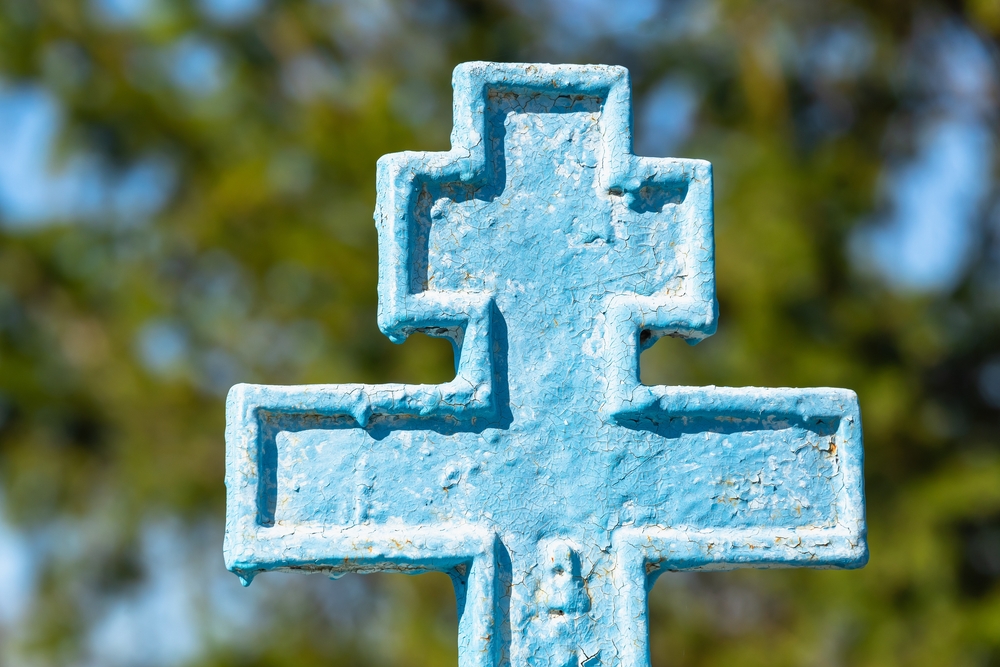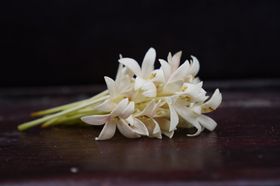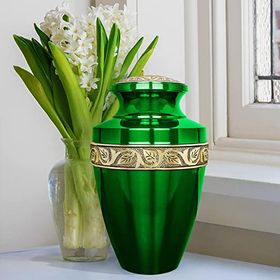Best Urns for Burials: What Should You Buy?
Published May 20, 2022

Cremation has gained popularity over the years, and after the cremation process is over, many people choose to bury the urn with their loved one's ashes.
People bury urns for many reasons. Some choose to bury an urn so it can be accessed and visited by friends and family. Another reason for an urn burial is when there are family members buried on a plot or next to each other in a cemetery, and you wish to bury the urn with them. Burying the urn instead of keeping the ashes can also prevent the descendants from disagreeing about what to do with the ashes in the future if you opt for cremation. Others decide on this type of burial because they want to bury the urn in their loved one's favorite place, where they were at their happiest.
With many people now opting for cremation, there is a wide range of urns available—but knowing which urn to buy for burial can be overwhelming. To help you with this dilemma, we have compiled all the information you need to know about cremation urns for burial.
What to Look for When Buying a Cremation Urn for a Burial
There are many different sizes and types of urns available, but choosing the right urn for burial is important. The location you choose to bury the urn will also have a part to play in the urn you select. A biodegradable urn may work and be necessary for places like memorial parks, while cemeteries require you to have an urn made from a specific material or a burial vault. Here are a few things to consider.
Burial Vault
Generally, a burial vault is required when burying an urn in a cemetery. A burial vault is a container made from sturdy material like metal or hard plastic that encloses the urn and keeps the cemetery grounds from caving in over time.
However, if you are burying a biodegradable urn or choosing to bury the urn at home or out in nature, a burial vault is not necessary.
Material Suitable for Burial
- Biodegradable urns These urns are made from materials like compressed paper, bamboo, or plant materials and allow you to respect your loved one's wishes without worrying about the environmental impact that a traditional burial may have. There are more options for where biodegradable urns can be buried than other urns because they eventually decompose and return to the earth.
- Metal Urns made of brass, stainless steel, bronze, copper, or pewter are another sturdy option for ground burial.
- Stone Stone urns can be made from granite, marble, and onyx and are suitable to withstand the underground forces of being buried.
Material Less Suitable for Burial
Urns made from wood, ceramic, glass, crystal, and porcelain are less suitable for burial and are better for keeping the ashes at home.
However, just about any urn can be buried as long as it meets the cemetery's requirements, and you use a burial vault to protect the urn from the ground collapsing around it.
Size
The size of your urn will be determined by the material and whether it's an extra-large urn or a standard urn. The shape, size, and design of burial vaults vary to accommodate different sizes and types of urns. If you are burying an urn on top of a casket or with another urn, size may have a small role to play—but urn sizes don't always vary as drastically as you may think.
How to Use a Cremation Urn
You may be wondering how to use a cremation urn. Generally, after the cremation process is complete, the crematory will place the ashes into a plastic bag which serves as a temporary urn. If you choose to transfer the ashes to the urn yourself, you will need to open the urn, which will be dependent on the type of urn you purchase.
- Opening a metal urn Metal urns tend to have threaded lids, so opening a metal cremation urn could be as easy as unscrewing the top. However, some metal urns are temporarily sealed to prevent them from being opened accidentally. If your urn is sealed with wax or adhesive, you can use a cotton swab with nail polish remover to loosen the seal. Run the swab along the seal a few times and wiggle the lid to open it.
- Opening a cremation box Cremation boxes can be opened by removing a few small screws from the bottom of the receptacle. Then, the bottom panel may be lifted or slid out of the way.
- Opening a ceramic urn Most ceramic urns have a threaded lid, so they can simply be twisted off. Once your urn is open, you will need to transfer the ashes from the temporary urn into your chosen urn.
Check out this article for a more in-depth guide on transferring ashes into an urn.
How to Bury Ashes in a Cremation Urn
The method of burying the cremation urn depends entirely on the location and type of urn you have selected. Here are some of the most common ways of burying cremated ashes.
- Burying cremated ashes in a cemetery Start by choosing the cemetery you feel is best. Purchase an urn and a burial vault if necessary. Often cemeteries will provide burial vaults for purchase which may be easier than trying to source your own. Each cemetery will have guidelines on how deep the urn needs to be buried. It is generally also possible to bury an urn on top of a casket or on either side of a casket.
- Burying cremated ashes on private property Some families choose to bury the ashes on their own property or family grave. The most important thing to keep in mind is to bury the cremains deep enough that they won't be disturbed by an animal. The standard rule is three feet deep whenever possible. Another consideration is soil erosion. So placing a memorial stone on top of the burial site is an option to reduce the risk of this.
- Burying an urn for planting Burial urns containing a tree sapling are becoming more popular, but the process can be slightly complicated. The cremains need to be treated to make the pH level suitable for the tree to grow. It is also advisable to use a tree native to your area. The burial depth essentially needs to be the same as if you were planting a regular sapling. There is also the option of planting a memorial tree if you prefer to keep the ashes.
- Burying a biodegradable urn Biodegradable urns will break down in the soil, and the decomposing time frame depends on the material it is made of. These urns are ideal for green cemetery burials or burials in state parks. It is also recommended to bury an eco urn at least three feet underground.
The urn you choose to honor your loved one is personal and needs to resonate with you and your family. However, as explained above, some urns are better suited than others for burial.





